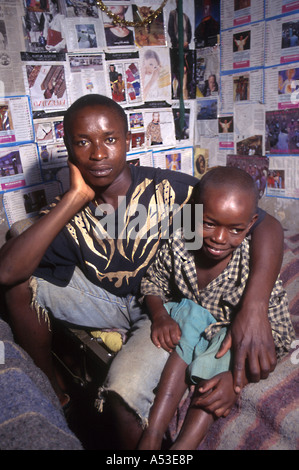
The World Food Programme (WFP) is accelerating its shift from the direct provision of food assistance and services in Kenya to the strengthening of national systems and capacities to deliver food and nutrition security. Captures public opinion on topical issues.

Leads research on key economic and socio-development numbers and draws up analytical info-graphics. Coordinates team of expert analysts and newspaper columnists. Opportunities for fostering self-reliance are being promoted and may be expanded to larger refugee populations. Coordinates the publication of in-depth articles on policy and current affairs. Unable to work or move freely, refugees are highly dependent on international assistance. Front pages of Daily Nation and The Standard newspapers. On Monday, November 1, the national dailies extensively delved into the 2022 succession politics in which the One Kenya Alliance (OKA) has restated it will take part. Kenya hosts 500,000 refugees, mainly in camps in remote, food-insecure counties. Kenyan Newspapers Review For November 1: OKA Accuses Uhuru Of Derailing Their Campaigns. Inefficiencies in food systems – the networks that are needed to produce and transform food, and ensure it reaches consumers – lead to high prices and insufficient market supplies, limiting the availability of, and access to, food. Unpredictable rainfall and recurring droughts contribute to the disruption of crops – 95 percent of which are rain-fed – and the erosion of soils.
#The daily nation newspaper nairobi kenya driver#
Significant vitamin and mineral deficiencies are a severe public health problem and some 1.5 million people living with HIV have their nutrition status undermined by their condition.Īgriculture remains the main economic driver but is very vulnerable to climate shocks. Malnutrition remains unacceptably high, with 29 percent of children in rural areas and 20 percent of those living in cities stunted. Families headed by women are more likely to be food insecure than those headed by men.

Food insecure families typically live in rural areas, are poor and depend on daily agricultural labour for income. Factors include rapid population growth – at a rate of 2.9 percent a year – climate change, stagnating agricultural production and inefficient food systems. Over one third of the population still lives under the international poverty line and social, economic and gender disparities remain.Īccess to adequate quantities of nutritious food remains a challenge for many, especially in arid and semi-arid regions which make up 80 percent of the country’s land area. However, even though the country has recently acquired lower-middle-income status, the increased wealth has not benefited all Kenyans equally. A decade of rapid economic growth, the inclusion of food and nutrition security in the government’s ‘big four’ priorities, constitutional changes that devolve administrative responsibilities to county governments and the country’s openness to innovation offer opportunities for the achievement of Sustainable Development Goal 2 on Zero Hunger and improved nutrition in Kenya.


 0 kommentar(er)
0 kommentar(er)
